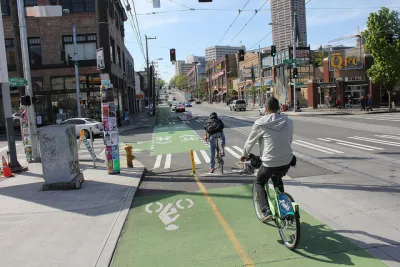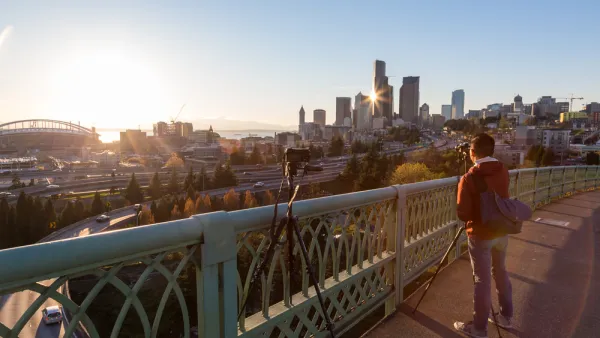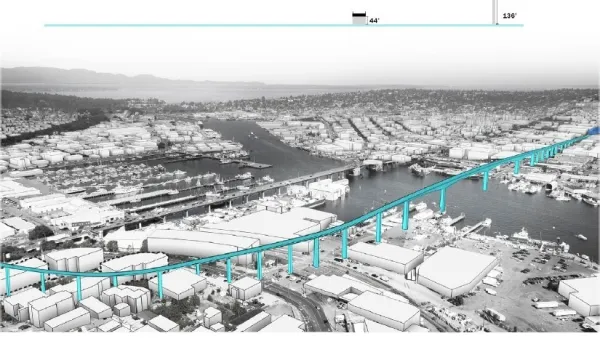A more than 400 percent increase in bike ridership following the opening of a protected bike lane on Second Avenue proves that Seattleites are more inclined to ride with safe facilities.

Part of an ongoing project to improve bikeability in Seattle, WA, a "project began with a pilot in 2014 to convert a regular painted bike lane on Second Avenue into a curb-and-landscape-protected bike lane," reports Angie Schmitt. The now protected lane extends through hilly downtown Seattle and features a physical barrier in the form of planter boxes and barricades separating bikes and cars.
The increased ridership is a great success for proponents of bike safety in Seattle. During her tenure to date, Mayor Jenny Durkan has cut plans for many similar projects including, "a bike lane on 35th Avenue NE, a dangerous thoroughfare which has been proposed for bike lanes for a decade." While the Second Avenue Bike Lane cost about $12 million (the most expensive bike lane in Seattle history) and required significant utility movement, hope remains that proof of the "game-changing power of a protected lane versus a painted lane" won’t end with this project.
FULL STORY: Ridership Jumped 400% When Seattle Protected a Bike Lane

National Parks Layoffs Will Cause Communities to Lose Billions
Thousands of essential park workers were laid off this week, just before the busy spring break season.

Retro-silient?: America’s First “Eco-burb,” The Woodlands Turns 50
A master-planned community north of Houston offers lessons on green infrastructure and resilient design, but falls short of its founder’s lofty affordability and walkability goals.

Delivering for America Plan Will Downgrade Mail Service in at Least 49.5 Percent of Zip Codes
Republican and Democrat lawmakers criticize the plan for its disproportionate negative impact on rural communities.

Test News Post 1
This is a summary

Test News Headline 46
Test for the image on the front page.

Balancing Bombs and Butterflies: How the National Guard Protects a Rare Species
The National Guard at Fort Indiantown Gap uses GIS technology and land management strategies to balance military training with conservation efforts, ensuring the survival of the rare eastern regal fritillary butterfly.
Urban Design for Planners 1: Software Tools
This six-course series explores essential urban design concepts using open source software and equips planners with the tools they need to participate fully in the urban design process.
Planning for Universal Design
Learn the tools for implementing Universal Design in planning regulations.
EMC Planning Group, Inc.
Planetizen
Planetizen
Mpact (formerly Rail~Volution)
Great Falls Development Authority, Inc.
HUDs Office of Policy Development and Research
NYU Wagner Graduate School of Public Service




























